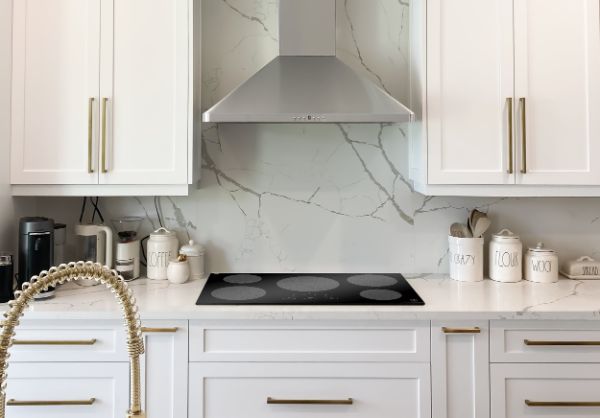Induction cooktops have gained popularity for their efficiency, precise temperature control, and sleek design. However, one question that often arises is whether a range hood is necessary when using an induction cooktop.
In this article, we will explore the importance of range hoods, their benefits, and whether they are essential for induction cooktops.

Table of Contents
Understanding Induction Cooktops
Induction cooktops utilize electromagnetic fields to heat cookware directly, rather than relying on traditional heating elements. This technology offers numerous advantages, including faster heating, energy efficiency, and precise temperature control. Induction cooktops are also known for their cool-to-the-touch surface, making them safer and easier to clean.
The Purpose of Range Hoods
Range hoods, also known as exhaust hoods or ventilation hoods, are designed to remove odors, smoke, steam, and airborne particles generated during cooking. They consist of a canopy or hood that is installed above the cooktop, with a fan and filter system that draws in and filters the air before venting it outside or recirculating it back into the kitchen.
Benefits of Range Hoods
- Smoke and Odor Removal: When cooking on a stovetop, especially when using high heat or frying, smoke and strong odors can quickly fill the kitchen. A range hood helps eliminate these irritants, improving air quality and keeping your kitchen fresh and clean.
- Steam and Moisture Control: Cooking generates steam, which can contribute to increased humidity levels in the kitchen. A range hood helps remove excess moisture, preventing condensation on surfaces and reducing the chances of mold and mildew growth.
- Grease and Airborne Particle Filtration: Range hoods come equipped with filters that capture grease particles and other airborne contaminants, preventing them from settling on kitchen surfaces or circulating in the air. This filtration helps maintain a cleaner and healthier environment.
- Heat Dissipation: While induction cooktops generate less heat compared to gas or electric cooktops, some heat is still produced during the cooking process. A range hood helps dissipate this heat, preventing it from accumulating in the kitchen and potentially affecting the surrounding area.
Range Hoods and Induction Cooktops
- Improved Air Quality: While induction cooktops are known for their efficient and clean cooking, there can still be instances where smoke, odors, and steam are produced. Using a range hood ensures that these byproducts are effectively removed from the kitchen, maintaining a pleasant and healthy cooking environment.
- Flexibility in Kitchen Design: Range hoods not only serve a functional purpose but also contribute to the overall aesthetics of the kitchen. They come in a variety of designs, finishes, and sizes, allowing you to choose one that complements your kitchen style and enhances the visual appeal of your space.
- Local Building Codes and Regulations: It is essential to consider local building codes and regulations when deciding whether to install a range hood for your induction cooktop. Some jurisdictions may have specific requirements mandating the use of range hoods, particularly when it comes to venting fumes and smoke outside the kitchen area.
Alternative Options
If installing a traditional range hood is not feasible or desirable, there are alternative options to consider:
- Recirculating Range Hoods: Recirculating range hoods utilize filters to remove grease and airborne particles, but instead of venting the air outside, they recirculate it back into the kitchen after passing it through the filters. While they may not be as effective at removing smoke and odors, they can still provide some benefits in terms of particle filtration.
- Downdraft Ventilation Systems: Downdraft ventilation systems are installed directly into the cooktop or countertop and work by drawing the cooking fumes downward, either through a vent or duct system under the floor or behind the cabinets. This option offers a sleek and unobtrusive design, but it may not be as efficient as traditional range hoods in removing smoke and odors.
—
While induction cooktops are designed to be efficient and clean, the use of a range hood can still offer significant benefits. Range hoods effectively remove smoke, odors, steam, and airborne particles, contributing to better air quality, reduced moisture levels, and a cleaner kitchen environment.
Consider local building codes, design preferences, and alternative options when deciding whether to install a range hood for your induction cooktop. Ultimately, a range hood can be a valuable addition to your kitchen, enhancing both functionality and aesthetics while ensuring a pleasant and healthy cooking experience.
